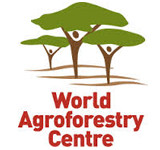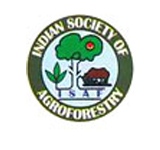
Vigyan Bhavan & Kempinski Ambience
10 - 14 February 2014
Delhi, India
blog

I usually wonder, why these lands are barren, wherever I found, while traveling, as a Project engineer in Kirloskar. My thinking and passion brought me to Agroforestery.
My father, in 1970’s, planted mango, anticipating labour shortage. I had replaced with tamarind, in 1990’s, during my engineering holidays, since mango did not grow well. It survived, but there were not much fruits, unviable.
After working in companies, my heart and soul pulled me back to trees. From our experience of wrong selection of trees, this time I was to identify a right tree and right farming method. From childhood, I always thought why do they remove weeds, nature would have created with some purpose, now I strongly believe this. So, naturally I was attracted towards natural farming in an integrated way,
I looked around for right choice of trees for my degraded / laterite, sloppy, dry land with red soil, in our hot climate with rainfall of 750mm average. Maybe by telepathy, I got in touch with tree experts and books on more than 220 trees, made me understand various aspects of trees, in 2004.
Then, I had short listed and categorized trees on the basis of Fruit for short term income, Timber for long term, Fodder trees to take care for summer needs of livestock, Nitrogen fixing trees (NFT) for mulching / vermicompost, shrubs / medicinal plants as intercrop & lower layer and planned for sheep, cow, honeybee, rabbit farming.
In 2005, started with rainwater harvesting structures and planted above short listed tree species in my land, based on each field’s soil condition.
- Fruit Trees: Jack fruit, Jambul, Amla, Custard Apple, Amla
- Timber: Teak, Bamboo, Mahogany, Ailanthus, Pterocarpus Marsupium, Sisoo and Red Sanders (Pterocarpus santalinus)
- Multipurpose Trees: Gliricidia for fodder and mulching along with Drumstick, Subabul
- Biodiversity: Curry leaf, Pungamia, along with my region natural trees like Neem, Albizia lebback and many more
Some trees grew slowly, others did not. The local people mocked at me but that did not bother me. Field experience taught me much more. I reviewed.
Rain is decreasing, its pattern is changing & different for each region, temperature is increasing, frequency between rains is more, humidity & soil moisture is becoming less. I understood that, books and others knowledge are based on past scenario, when there was more rain & labour. Therefore, I needed to correlate.
Fruit trees and fast growing timber trees require good soil, rain and water that I did not have. Harvesting & selling small quantities of various fruits became difficult for me, being absent landlord. I re-planned. I had gone for RWH methods like in-situ, to cater 100mm rainfall (occasionally) in an hour of 20ft sloppy land.
To my astonishment, Red Sanders survived all these extremes. Although it grows slowly in initial 5 years then it grows well, it suited my land perfectly. It is a native tree of my region. Also, Gliricidia unexpectedly managed to grow and very useful during drought years as fodder. Amla, with lot of mulching with waste wood gives me returns to manage yearly routine expenses of my farm.
Understanding RedSanders took 4 years. Everybody goes to Tirupathi to pray, I went to understand Red Sanders and was very useful. Jack fruit, Jambul were replaced with Red Sanders in right season, based on rain pattern, soil humidity, temperature etc. Enhanced its growth, with mulching, in-situ RWH, protected from animals, anti-social elements and facilitated with natural animals droppings for manure. Now it is growing well, the same people appreciate my hard work and forecasting. Last year alone, they had planted 10000 saplings of Red sanders.
Red Sanders is a Valuable, Endangered, Dry land species, used as medicine for diabetics etc, musical instrument, natural food colour & dye, seems to be preventing atomic radiation in nuclear power plants. Hence, in international demanded.
Red Sanders are more economical than coconut, which requires lot of water, good soil, care etc. In 20-25 years, an acre of coconut will give 20,000 USD, (NPV), whereas Red Sanders will fetch 500,000 USD. It is an excellent foreign exchange earner, a Healthy Wealth from dry, degraded land without much water and energy.
I also planted many more tree species to serve its purposes, like to attract birds, improve humus, microclimate, attract bees etc and allowed many natural tree species in the land to make my farm a biodiversity, It is nothing but, simulation of forest. I planted variety of fruit trees for own needs (my family & my labour) to enjoy naturally grown, nutritious, local fruits of our region. Now we enjoy.
A peculiar identification is Ailanthus, grows well, in newly formed bunds, loose soil, which I understood from seeing its growth in mined dumping.
Gliricidia also managed to grow, used for mulching for weaker plants. Being multipurpose tree, our sheep got some green fodder in last drought summer. Sheep grazes only the grass, manures my tree plants, and keeps the weeds in control, cows not allowed; it damages tree saplings and soil compaction.
My engineering mind looks for 100 % utilization of light, land, time and nature. To achieve this, now, I focus on shade loving plants, like Aloe Vera. It grows in tree shade & humus, survives drought. It prevents spreading of fire, one of the issues caused by drunkards.
Perseverance pays!
8 years of struggle in my dry, degraded land without water, now it looks good even in summer. My forest, Brahmavanam, has more than 12000 trees, 100 tree varieties, all local shrubs, mostly medicinal, natural animals like Peacock, Fox, Rabbits, Iguana and birds are enjoying the environment, along with us.
Today, I have a sense of happiness and I feel that I have, contributed something to nature. It is a Good value addition along with nature’s process, without polluting (like dying / plastic units), without depleting nature’s source, like fossil fuel / coal & etc. Thanks for some awards & recognition, not for my satisfaction, but to spread the awareness of trees / agroforestry.
I strongly feel, Dry land agroforestry in India, has huge potential with large degraded barren lands with less rain, depleted groundwater, Industrialization, shortage of labour during peak season, small machineries not popular, idle land with migration of educated people and large size of unviable land for dry land cultivation shall be promoted for Agroforestry.
A Constant govt policy, “Grow any Tree and cut any Time and Export from Cultivated lands”, with simple procedures, will fetch billons of wealth in a healthy way and these kind of important valuable species will not become endangered.
We will overcome hurdles. Hope the new technologies, laws and consciousness will help us to interact, share and do great job to reinstate the beautiful nature.
My next project has started with my friend, in another 20 acres, with a little better soil and water.
Would like to be in touch will all Agro foresters in this world, thanks to WCA2014- gave a good start, I feel sorry for having missed the WCA2014.
We Breathe Trees!
Photo: The author in his Brahmavanam forest
Blogpost and photo by Ganesan RP (Brahmavanam, Tamilnadu, India) – ganesanrp(at)gmail.com
|
This post is entry nr #31 in our #WCA2014 blog competition. The five blogposts with the most and highest votes will receive a signed copy of the book "Trees for Life". The most popular blogpost will get an iPad.
This blogpost received 16 votes, with an average score of 4.5 (out of a max of 5).
Follow our #WCA2014 social reporting teamfollow our social reporting team via the #WCA2014 tag on Twitter, our blog and our Facebook page.
|






16 People have left comments on this post
Hi Ganesan,
I really enjoyed reading your blog. You did a wonderful job exploring tree species for your land. I am sure if People like you also pay attention to farming our agriculture situation will improve significantly. Good job….
Nikki Pilania Chaudhary
Farmer
Dear Ganesan, Nice and informative blog. Kindly share you knowledge and experience of dryland agroforestry with local farmers and encourage them grow right type of tree species in their land.
Dear Ganesan,
Wonderful steps to keep our world clean and green. Create more number of Brahmavanam and best wishes to continue your noble service to our country.
Dear Ganesan,
Thank you for sharing your experience and knowledge gained from your hardwork.
It was very inspiring to read your about work. I think this is when true knowledge arises.
Best wishes on your journey to restoring environment on Mother Earth where all living beings have a healthy life as nature intended.
Guru Venkat
Dear Mr. Ganesan,
A very nice personal experience packed in this article with so much passion and perseverance. Great job and more than that, your interest in sharing this with everyone. I am sure you will (are already) enjoy(ing) the fruit of your labor. Please make your passion, enthusiasm and perseverance a contagious one so this country and the world benefit from that. KUDOS to you !!!!.
I could feel your care and concern for the Earth. Good effort. Hope you enjoy every bit of the work on the land. All the best.
Just a trivia….the thing about the sheep and cattle. Which one impacts the soil more? I thought, pound for pound, sheep and goats compact the earth more than cattle.
Well done Ganesh. Your ideas, research and hard work has brought this change. Keep doing the good work.
Great work Ganesh, wonderfully inspiring….reminds me of Cap Gopinath’s endeavors on similar efforts – you have proved such sustained efforts with nature becomes measurably fantastic, in relatively shorter times…really proud of you.
Excellent work dear Ganesh!!
An interesting blog from a technocrat……exploring ideal trees to match local soils & climate.
Right Thing At Right Place Works Better….UR Brahmavanam is just wonderful
Hats of to you sir
very Interesting to read.
Good effort.
Inspiring story! Experimenting and learning from the land are extremely important!
nice work mr.ganesan. congrats». publishing a blog. how to get to ur brahmavanam? where is it located.
Congratulations for your super initiative. Would love to keep in touch.
JohnPeter.A.
People’s solidarity Association.